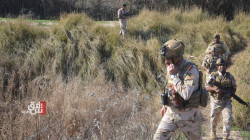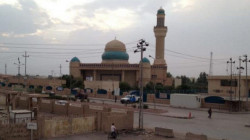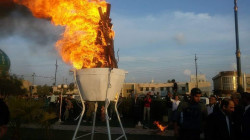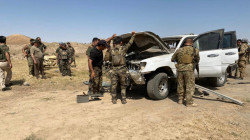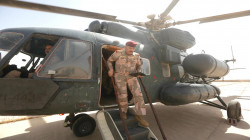Tuz Khurmatu: left to wither in dust and blood

Shafaq News/ The Tuz Khurmatu district, located in the east of Saladin governorate, has been plagued for many decades by dilapidated and obsolescent urban planning due to national and political conflicts despite the historical and social particularity of the district.
Conflicts took a toll on the city
The long history of conflicts ravaging the city even prior to 2003 and the strife for influence and power in the district had taken a toll on its buildings, according to Arab, Kurdish, and Turkmen officials.
Specialists and observers attribute the languishing urbanization in the district to the nationalist conflicts for administrative hegemony between the Arabs, Kurds, and Turkmen components.
However, the administrator of Tuz Khurmatu, Zain Al-Abidin (Turkmen), said that his administration has devised and incorporated extensive service plans in the district's budget, including eight vital projects in water, electricity, and road rehabilitation.
"The district has been deprived of road paving projects for nearly 17 years. Only 10% of Tuz Khurmatu's roads are paved," he said.
Zain al-Abidin implicated the role of extremist terrorist groups, namely, Al-Qaeda and ISIS, in fueling national and sectarian strife in Tuz khurmatu over the past years, in addition to the severe damage to the urban structure of the district.
"The social and security stability in the district recently was not sufficient to commence a real reconstruction project. Instead of trees, only bombs were planted recently."
The Kurds have another opinion
Tuz khurmatu's infrastructure is from the 1960s and 1970s amid a clear absence of any modern urban manifestations.
Hassan Mohammed Ahmed, a former member of the Saladin provincial council, stated that the causes of negligence, service degradation, and urban collapse in Tuz khurmatu are the destructive role of terrorist organizations that infested the district adjacent to the Hamrin Mountains and used its outskirts as launchpads to terrorize its communities and hinder all service and development projects.
"Since the withdrawal of the Kurdish forces in 2017, terrorist groups have turned Tuz khurmatu into a disaster-stricken city. Those groups have been a stumbling block to all reconstruction plans and projects, besides other internal conflicts."
According to the former provincial councilman, "The successive governments have inherited the trait of targeting and marginalizing the Kurds in Tuz Khurmatu from the former Baathist regime. It practiced the marginalizing of the district given it is the southern gate of Kurdistan."
"Since October 2017, the Turkmen Mobilization in Tuz khurmatu has pursued an inhumane and immoral approach towards the Kurdish properties...More than 4,000 Kurdish villages were displaced, 98 Kurdish houses were destroyed, 3,500 houses were burnt, dozens of shops, 19 workshops and production plants, 15 cars, 30 generators were looted, 13 Kurdish party headquarters and several civil organizations and radio stations were looted and burnt. All the looting and vandalism targeted Kurds in Tuz khurmatu."
"The damage inflicted by the Kurds after the events of 2017 cannot be compensated by the Federal and Regional Governments," he added.
The weakest link
The director of Sulaiman Bek sub-district, south of Tuz khurmatu, Talib Mohammed Mustafa (Arab), attributes the poor condition of services and urban retardation in Tuz khurmatu to nationalist and regional conflicts.
"The political and national conflicts in Tuz khurmatu are deep-rooted, complex, and extend even between the members of the bloc or the community itself because of political interests. The Arab community is the weakest link in the district. All the conflicts are purely political, afar from the Arab, Kurds, and Turkmen communities."
Mustafa called for establishing an administrative government in Tuz khurmatu that does not account for national, partisan, or sectarian considerations.
The Tuz khurmatu district is located in north-eastern Iraq. It was administratively annexed to the Saladin governorate since the administrative amendments in 1976. Before that, it was affiliated with Kirkuk. Its population is nearly 119,000, inhabited by Kurds, Turkmen, and an Arab minority. Tuz Khurmatu district is a disputed area covered by Article 140 of the Iraqi Constitution.
